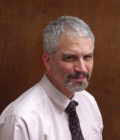What a Waste: Septic Tanks and their Environmental Problems
Commentary by Michael D. Shaw, HealthNewsDigest.com
 Although
many of us probably haven't given it much thought, one benefit of urban living
(in a developed country) is that you are usually connected to some sort of
wastewater and sewage treatment system. [Visitors to SepticTankInfo.com are
likely to have given this considerable thought.] As environmental concerns grew, these
systems were perfected to remove suspended solids, control nitrate and phosphate
levels, and disinfect the effluent. In addition, since chlorine is most often
used for disinfection, it is also necessary to control the residual chlorine, as
it may affect aquatic life. So-called tertiary treatment can remove more than 99
percent of all the impurities from sewage, producing a virtually ready-to-drink
effluent.
Although
many of us probably haven't given it much thought, one benefit of urban living
(in a developed country) is that you are usually connected to some sort of
wastewater and sewage treatment system. [Visitors to SepticTankInfo.com are
likely to have given this considerable thought.] As environmental concerns grew, these
systems were perfected to remove suspended solids, control nitrate and phosphate
levels, and disinfect the effluent. In addition, since chlorine is most often
used for disinfection, it is also necessary to control the residual chlorine, as
it may affect aquatic life. So-called tertiary treatment can remove more than 99
percent of all the impurities from sewage, producing a virtually ready-to-drink
effluent.
However, at least 25% of Americans are not so connected, and must rely on septic
tanks.
Septic Tank Operation
First used by the French in the 1870s, and little changed in design since the
1880s, these devices generally consist of a double-compartment tank, usually
made of concrete, fiberglass, or plastic, that is buried in the ground. Input to
the tank is directly from the dwelling, and output is to the leach field.
As waste flows into the tank, heavier solids sink to the bottom, forming the
"sludge" layer. Lighter substances, such as grease and small food particles,
float on the surface in the "scum" layer, while in the middle resides the bulk
of the liquid and some additional suspended materials. The second compartment
receives the "load" of mostly clarified liquid.
Solids are decomposed by the anaerobic bacterial action of the sludge, derived
from our own gastrointestinal systems. Hence the name "septic." In theory, a
relatively harmless effluent will be produced, and given proper soil conditions,
further decontamination can occur. Even under ideal conditions, eventually the
amount of sludge will interfere with the bacterial digestive action, and it must
be pumped out, for disposal elsewhere.
When Septic Tanks Quit Working
Unfortunately, if the bacterial process is reasonably efficient for taking care
of the normal human by-products, it was never well suited to other discards such
as simple cooking grease, that can hinder system operation, let alone strong
household cleaners, and other chemicals that might kill the working bacteria.
These shortcomings can be further complicated by lack of proper maintenance and
inflows of wastewater beyond the original specifications.
While a worst case scenario to the individual homeowner might be a severe
plumbing backup, by the time this has occurred, untreated sludge has no doubt
gone into the environment, since all the leach field calculations are based on a
properly functioning system. Thus, our negligent homeowner has become a big-time
polluter.
Beware also the mad scientist chemistry set inside the tank. Under the anaerobic
conditions, nasty H2S (hydrogen sulfide) can be created. Likewise, nitrates and
organic nitrogen compounds are reduced to ammonia, and the greenhouse gases
carbon dioxide and methane can proliferate. What's more, given the load's
inherently low oxidation-reduction potential, phosphate is kept in a soluble
form, and that can trigger unnaturally high algae blooms, as well as potentially
toxic cyanobacteria.
Engineering and Legal Issues
Further issues derive from critical engineering concerns relating to the water
carrying capacity of the surrounding soil, and the height of the water table.
Not only does the leach field need a minimum separation from the water table to
prevent contamination, but care must be taken to comply with regulations
covering septic system clearances from wells, buildings, and various other site
features.
Many local governments are aware of the pollution hazards of septic tanks, and
have been encouraging—if not forcing—affected homeowners to be far more vigilant
than ever before. Some areas have even banned the tanks completely. Ironically,
there are certain communities within urban settings that could easily have been
connected to existing sewer systems, but either eschewed the "invasiveness" of
running all the requisite pipe, or simply retained the status quo to limit
growth. Neither tactic makes any ecological sense.
While there will always be some isolated residences that deem a sewer connection
economically unfeasible, prudence in health and the environment dictates that
any reasonable concentration of dwellings should justify modern sewage and
wastewater treatment.
Michael D. Shaw
Exec VP, Interscan Corporation
Correspondent at Large - HealthNewsDigest.com
mds1@gasdetection.com
http://www.gasdetection.com
www.HealthNewsDigest.com
© Copyright by HealthNewsDigest.com
Republished at SepticTankInfo.com by permission of the author.
